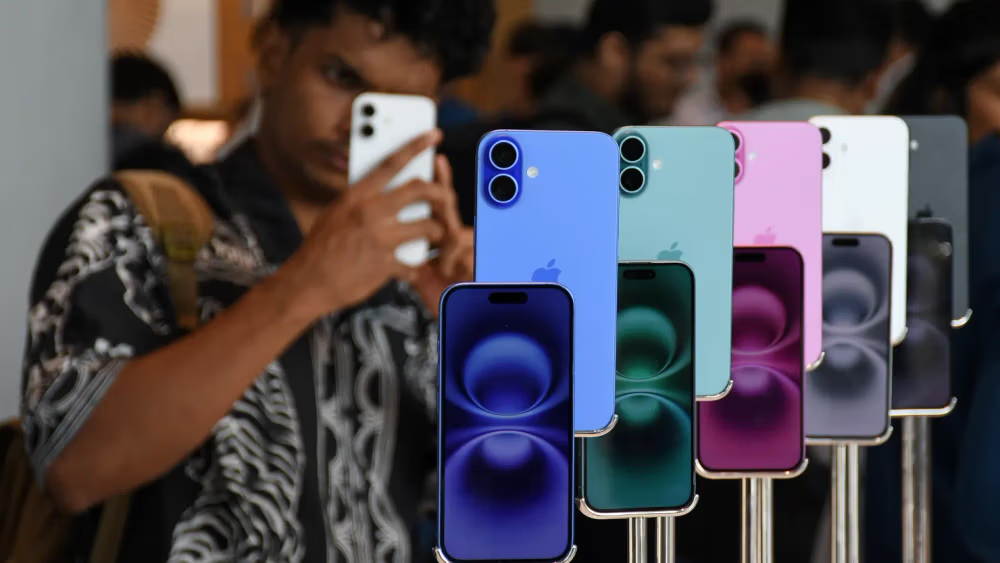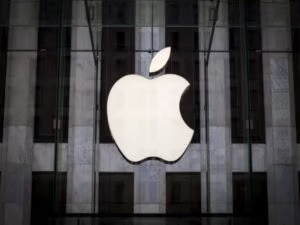Shipments of iPhones from India to the U.S. jumped 76% year-on-year in April, according to estimates from Canalys, now part of analyst firm Omdia. The sharp increase highlights Apple’s intensifying “Made in India” strategy as it navigates mounting trade tensions with both Beijing and the Trump administration. The data indicates that approximately 3 million iPhones were shipped from India in April, compared to just 900,000 from China—a 76% drop from the same period last year.
Omdia bases its smartphone estimates on customs records and iPhone distributor channel data.
Response to tariffs and trade disruptions
Le Xuan Chiew, a research manager at Omdia, said the data reflects Apple’s aggressive moves to adapt to Washington’s tariffs on China, where the majority of iPhones have historically been produced.
“This latest trade war with China, is the type of disturbance that Apple has long been trying to prepare itself for,” he said, pointing to the company’s early investments in Indian supply chains during the Covid-19 pandemic.
India first surpassed China in iPhone shipments to the U.S. in March, just before President Trump’s “reciprocal tariffs” took effect on April 2. Chiew noted that the spike in March was likely due to stockpiling in anticipation of the policy changes.
Shift to India persists despite tariff exemptions
Even after Trump exempted iPhones and certain electronics from his tariffs on April 11, Apple maintained its India shift. In early May, Apple CEO Tim Cook reaffirmed that most iPhones sold in the U.S. would soon be manufactured in India.
iPhones shipped from China still face a 30% import duty under Trump-era tariffs, while those from India are taxed at a lower 10% baseline.
India’s capacity may not keep pace—for now
Despite rapid growth, India’s ability to meet U.S. iPhone demand is limited.
“India’s manufacturing capacity isn’t expected to grow fast enough to take the entirety of U.S. demand. It’s still too early,” Chiew said, noting that the country only recently began producing the iPhone 16 Pro. Omdia estimates U.S. iPhone demand at 20 million units per quarter, a threshold India may not hit until 2026.
Daniel Newman, CEO of research firm Futurum Group, cautioned that the shipment data only captures final assembly.
“It was actually a very low lift for them to migrate more and more of the final assembly from China to India,” he said. “A vast majority of the sub-assemblies are all still in China.”
Political pushback from Washington and Beijing
Apple’s shift to India could face obstacles from both the U.S. and China, analysts warn.
Newman said Apple’s move doesn’t align with Trump’s broader goal of bringing manufacturing jobs back to the U.S., making it a “dangerous game” for the tech giant.
On Friday, Trump again escalated tensions, threatening via social media to impose a 25% tariff on all iPhones unless they are manufactured domestically.
He reiterated his stance that iPhones sold in the U.S. must be built “not in India, or anyplace else.”
At the same time, China may make it harder for India to become a full alternative in the Apple supply chain. Local reports suggest Beijing is limiting India’s access to critical tech machinery and skilled labor.
India seen as Apple’s ‘life raft’
Despite challenges, many see India as Apple’s most viable long-term manufacturing alternative.
Dan Ives, global head of tech research at Wedbush Securities, acknowledged the logistical and supply chain complexities in India but remained optimistic.
“Producing iPhones in the U.S. is a fairy tale in our view and Apple will continue to plow ahead on the India path,” he said. “Cook will look to negotiate with Trump but India is the focus and not changing.”





